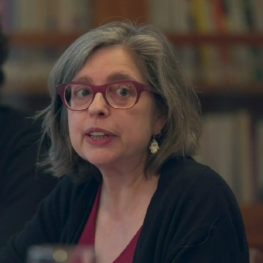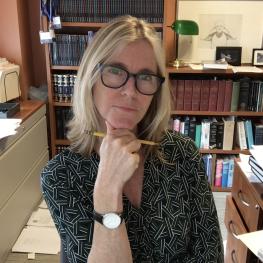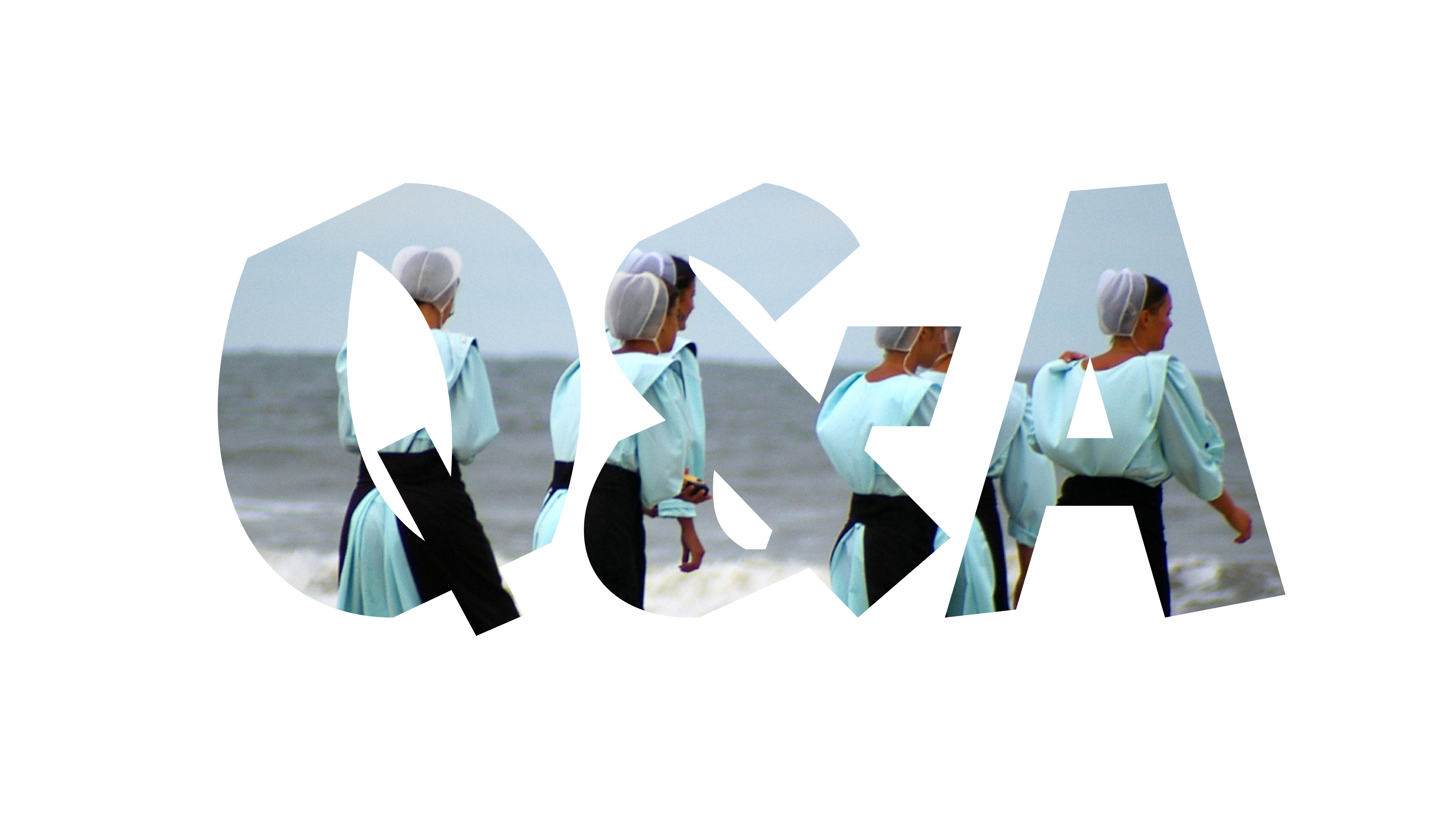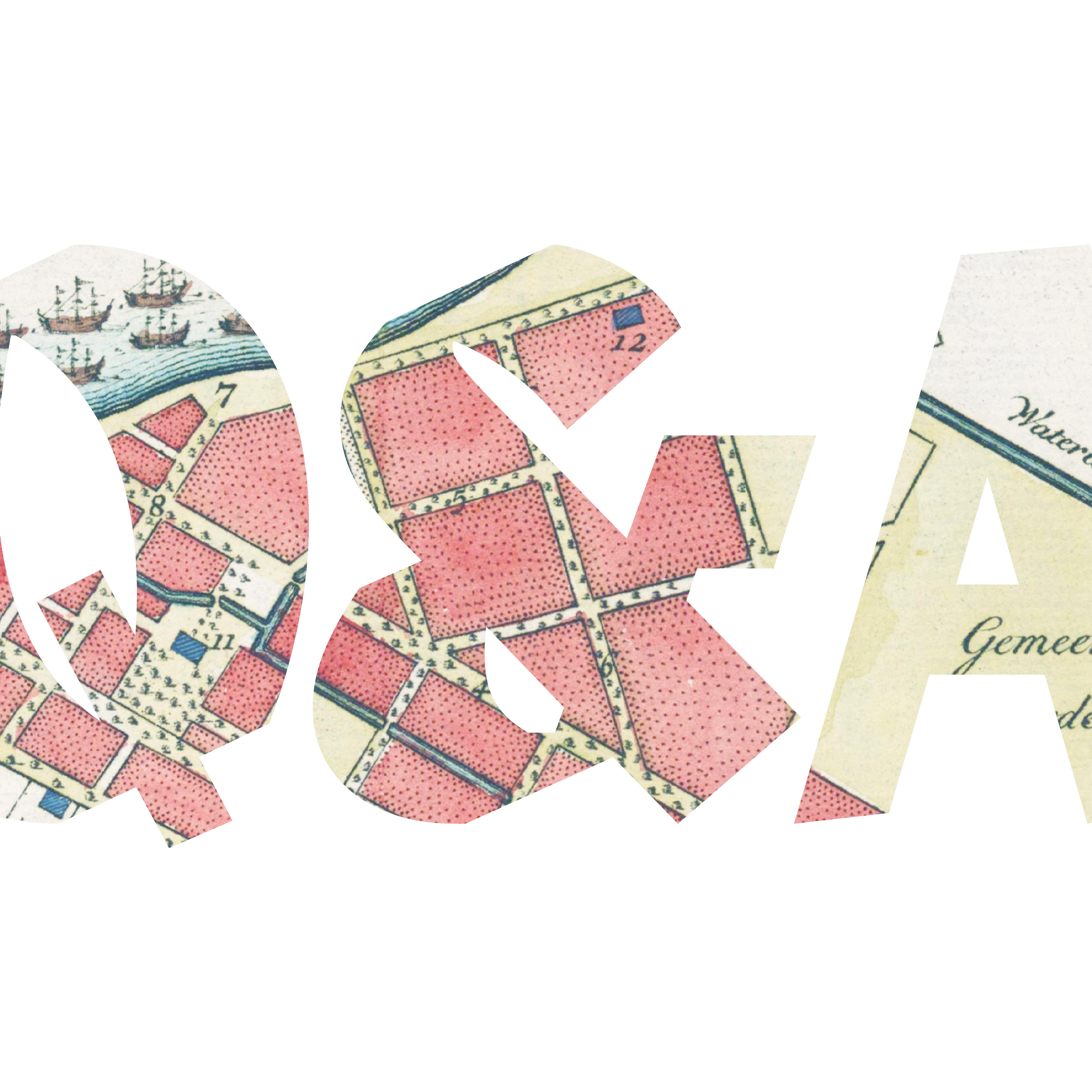Q&A: Katz Center fellow Carmen Caballero Navas Knows a *Lot* about Medieval Gynecology
Q&A: Katz Center fellow Carmen Caballero Navas finds women’s expertise as laced between the lines of male-authored medieval gynecological texts
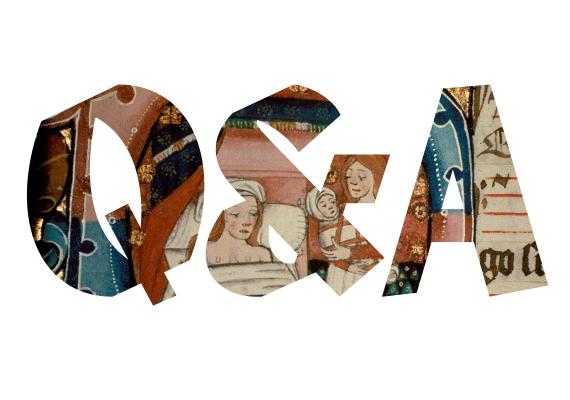
Detail: Ranworth Antiphoner, fol. 257.
Natalie Dohrmann (NBD): Carmen, tell us a bit about your broad scholarly interests, what drew you to them, and what especially excites you about them personally and/or intellectually.
Carmen Caballero Navas (CCN): You could say that my broad scholarly interest lies in the study of medicine among medieval Jews of southern Europe. But a significant part of my research focuses on Hebrew texts related to women’s health care, on women as both recipients and providers of medical care, and on Jewish debates surrounding sexual difference and the construction of meanings attributed to the female body.
I was drawn to these topics through a mix of personal interest and sheer serendipity. There is a funny story in my family about how I ended up pursuing a degree in Hebrew and Jewish studies. It started when my brother, who had taken an Arabic course in the first year of his B.A., suggested that I sign up for an elective Hebrew course during my first year. Neither of us imagined that I would fall in love with the Hebrew language, a passion that eventually led me to an interest in Jewish history.
Later, during my graduate studies, I knew I wanted to research medieval Jewish women. I’ve been a feminist since a young age, and I’ve also been fascinated by the Middle Ages for as long as I can remember. It was my then very young supervisor, Lola Ferre, who guided me toward the study of medicine—simply because it was her area of expertise. Once again, neither of us anticipated the happy outcome that combining medicine, medieval Hebrew, and the historical experience of Jewish women would have for both my life and my career.
NBD: Your project here at the Katz Center examines medieval gynecological texts. What are some of the most interesting things you have found in these texts? Do you know something about medieval society from them that you could not have learned from other sources?
CCN: For this project, I chose to study the content related to women's conditions in two early, if not the earliest, medical handbooks originally written in Hebrew following the inauguration of the Hebrew medical library at the end of the twelfth century. The Hebrew corpus relied mainly on translations from Latin and Arabic, but these two texts were produced in Hebrew by the second half of the thirteenth century, or slightly later. I was already familiar with them but having the opportunity to explore their content more deeply and to read several of the manuscripts that preserve them has been revelatory. Medical texts never cease to surprise me. They offer such a wealth of knowledge and a richness of information: medical, historical, cultural, and, of course, about the society in which they were produced.
In theory, medical texts are not the most reliable sources for historical research, as they rarely provide the kind of data found in documentary sources. However, when read carefully and critically, using the appropriate analytical tools, they become valuable sources. These two books provide evidence of actual medical practice both within and across religious boundaries, as well as of intellectual exchanges between specific Jewish and Christian physicians, and other categories of healing agents. They include case histories involving real, though generally anonymous, individuals (I admit I’ve especially enjoyed some of the more bizarre anecdotes). In addition, they offer valuable insights into the hierarchies of practice and care shaped by ethnicity, religion, class, and gender, and shed light on contemporary conceptions of health and well-being that challenge many of today’s misconceptions about medieval views on these issues.
NBD: Why was gynecology (sometimes) relegated to its own treatises, as opposed to being integrated into works of general medicine? Did any other medical topics get a similar treatment?
CCN: I wouldn’t say that gynecology is relegated to its own texts, rather, it’s a matter of textual genres and medical traditions. The ancient and medieval Greco-Latin medical traditions had specific genres dedicated to “women’s matters,” one of the meanings of the Greek term gynaikeia. In contrast, the Arabic medical tradition rarely produced independent treatises focused solely on gynecology. Instead, it incorporated extensive material on female physiology, health, and disease into broader medical handbooks.
That said, both medieval traditions were rooted in Hippocratic-Galenic gynecology and shared a similar understanding of the sexed body, categorized as either male or female. They sought to fit cases of seemingly dual- or nonbinary-sexed individuals within a binary gender framework. Both traditions also regarded women’s bodies as weaker and more susceptible to disease than men's, pathologized menstruation, and focused their attention on the womb.
Interestingly, the Hebrew gynecological corpus that developed under Latin influence followed both patterns of textual transmission, though to varying degrees. On one hand, it did give rise to a number of independent treatises; on the other, sections, treatises, or chapters on women’s diseases were included in broader medical works, such as the two texts I studied during my time at the Katz Center. I was especially interested in exploring whether there were differences in approach, as well as identifying possible similarities, divergences, and patterns of continuity and change between these texts and the independent treatises.
NBD: You find traces of knowledge of women’s medical expertise within male constructed medical literature. Can you say more about that?
CCN: Yes, I do, despite the fact that, as you note, this is a male-constructed body of literature. The texts in the Hebrew corpus were written by men and generally (although not exclusively) intended for a male audience. Thus, although their primary concern is women’s health and disease, women themselves are almost entirely absent from the narrative. Nevertheless, these texts contain references to women's medical knowledge and practice. While these references are often anonymous, they clearly document female medical activity and explicitly recognize certain women’s healing expertise. As such, they serve as valuable sources for reconstructing women’s practices and their authoritative knowledge.
In fact, this is one of my main scholarly and personal interests. I explore strategies and research methodologies designed to shed light on women’s health practices and to identify instances of original knowledge attributed to anonymous women and preserved in written texts. My ongoing research on the medieval Hebrew gynecological corpus has enabled me to collect and analyze a substantial number of such attributions. Based on this material, I have proposed a taxonomy for classifying the ways in which recipes and healing practices are ascribed to women in these texts. My aim is to bring to light knowledge and practices that often lie hidden between the lines of texts written in the masculine gender (Hebrew being a gendered language) and to examine how female healing agency was perceived by the male authors who transmitted these sources, as well as how their views mediated that transmission.
Significant gaps remain in current knowledge regarding medieval Jewish women’s roles in healthcare but we are on our way to bridging them.
NBD: Jewish medical texts in Hebrew were navigating between Arabic-Muslim and Latin-Christian sources. How does religion show itself in this corpus?
CCN: Religion plays several roles in the Hebrew corpus of medicine in general, and in the corpus of gynecology in particular, especially in connection with issues of identity, fear of acculturation, and legitimacy.
One of the recurring concerns in medical texts is the use of nonkosher foodstuffs, ingredients, and treatments associated, especially, with the Latin medical traditions and interreligious medical practice.
What I find most compelling, however, is the significant role that religion—or more precisely, rabbinic culture—played in the Jewish endorsement of medieval gynecology. Rabbinic literature had long invested rabbis with authority over the theoretical understanding of women’s bodies. For the early Hebrew medical writers, who were trained in traditional talmudic scholarship, the knowledge of female physiology presented in Greco-Arabic medicine may have seemed less “alien” than other concepts precisely because rabbinic discourse had already engaged with these topics.
In the case of gynecology, more than in other areas of medicine, the encounter of contemporary medicine and Jewish tradition was something of a win-win. Rabbinic interest in the female body helped justify the need to take in and adapt gynecological knowledge, while rabbinic authority gave legitimacy to male engagement with women’s health. In return, the medical ideas drawn from external sources strengthened rabbinic expertise and bolstered their authority over how women’s bodies were understood.
In fact, there was a continuous exchange between rabbinic and medical discourses throughout the Middle Ages, especially when it came to issues like generation and (in)fertility. We see this, for example, in how medical ideas made their way into biblical commentary, or how rabbinic thinking shaped the way medical texts addressed these topics.
NBD: What does a residential fellowship bring to the work of research that other more solitary study does not?
CCN: This is a great question, because this fellowship has truly been a remarkable experience for me. I applied to the fellowship because I needed dedicated time to pursue my research, and the Katz Center is one of the most, if not the most, prestigious institutions of Jewish studies worldwide. And most important, this year’s theme was Jews and Health. But what I’ve received from the Katz Center has far exceeded my expectations.
Of course, the generous funding, the gift of time, and the safe, well-resourced environment in which to conduct research are all crucial and I deeply appreciate them. The facilities and support the Center provides to visiting scholar are outstanding. The Library is a dream. Yet, what stands out most is the care and intentionality with which a space of genuine scholarly conviviality is created and nurtured, extending from logistical support to the highest levels of academic engagement.
I’ve been given the best conditions to advance my individual projects while being invited into a vibrant, collaborative community. The Center offers a rich array of lectures and academic activities, but most impactful are the weekly internal seminars, where all cohort members present their work for open discussion. These sessions generate a dynamic, rich and ongoing interdisciplinary exchange that I’ll miss (already miss) dearly.
The annual fellowship theme provides a shared thread that connects scholars across time periods, disciplines, and perspectives. We are encouraged to step out of our specialties, to see the world through different lenses, to listen deeply, to engage critically, and to contribute across fields. For me, this has been transformative. I’ve learned a great deal, received invaluable feedback on my research, and being inspired by the work of others. This experience has left a lasting mark on me and my scholarship. I can just express my deep gratitude to the Katz Center and to the extraordinary people (all staff and directors) who work so thoughtfully and tirelessly to make it the exceptional place that it is.
